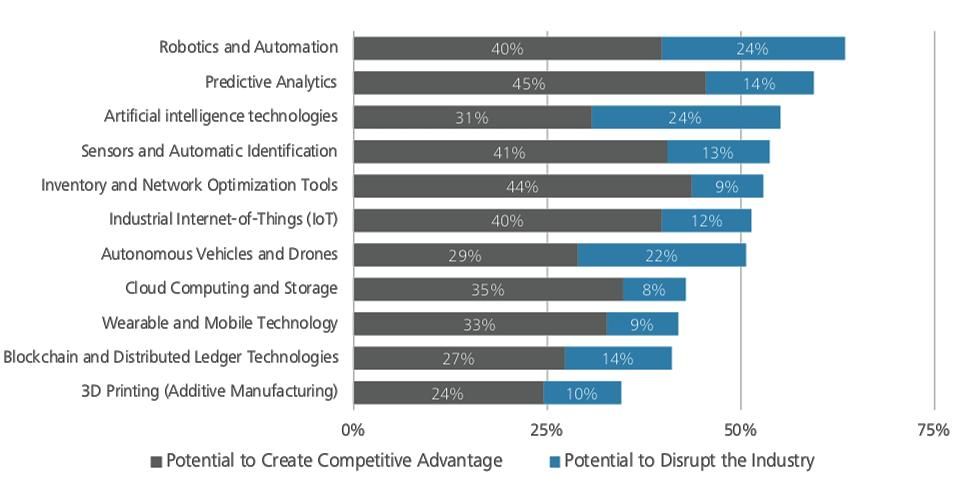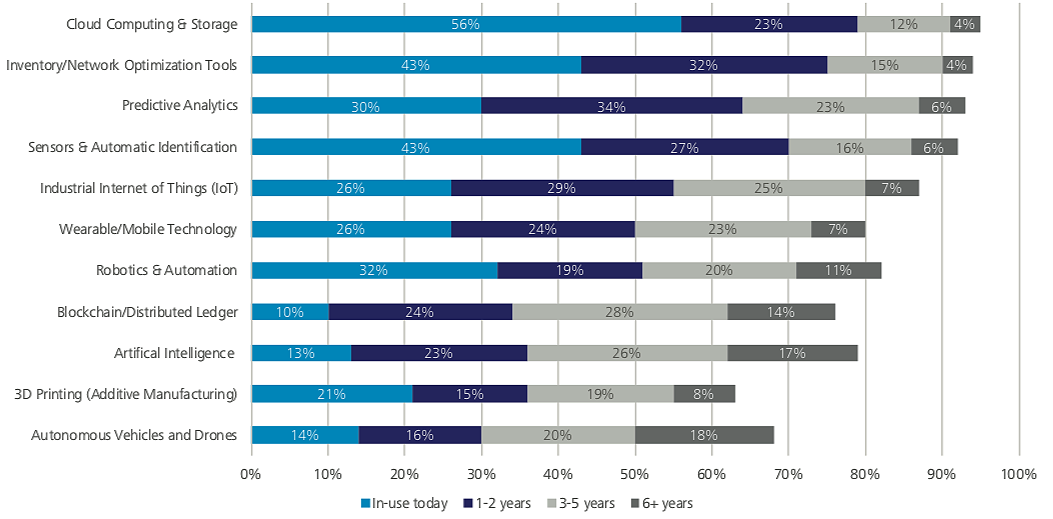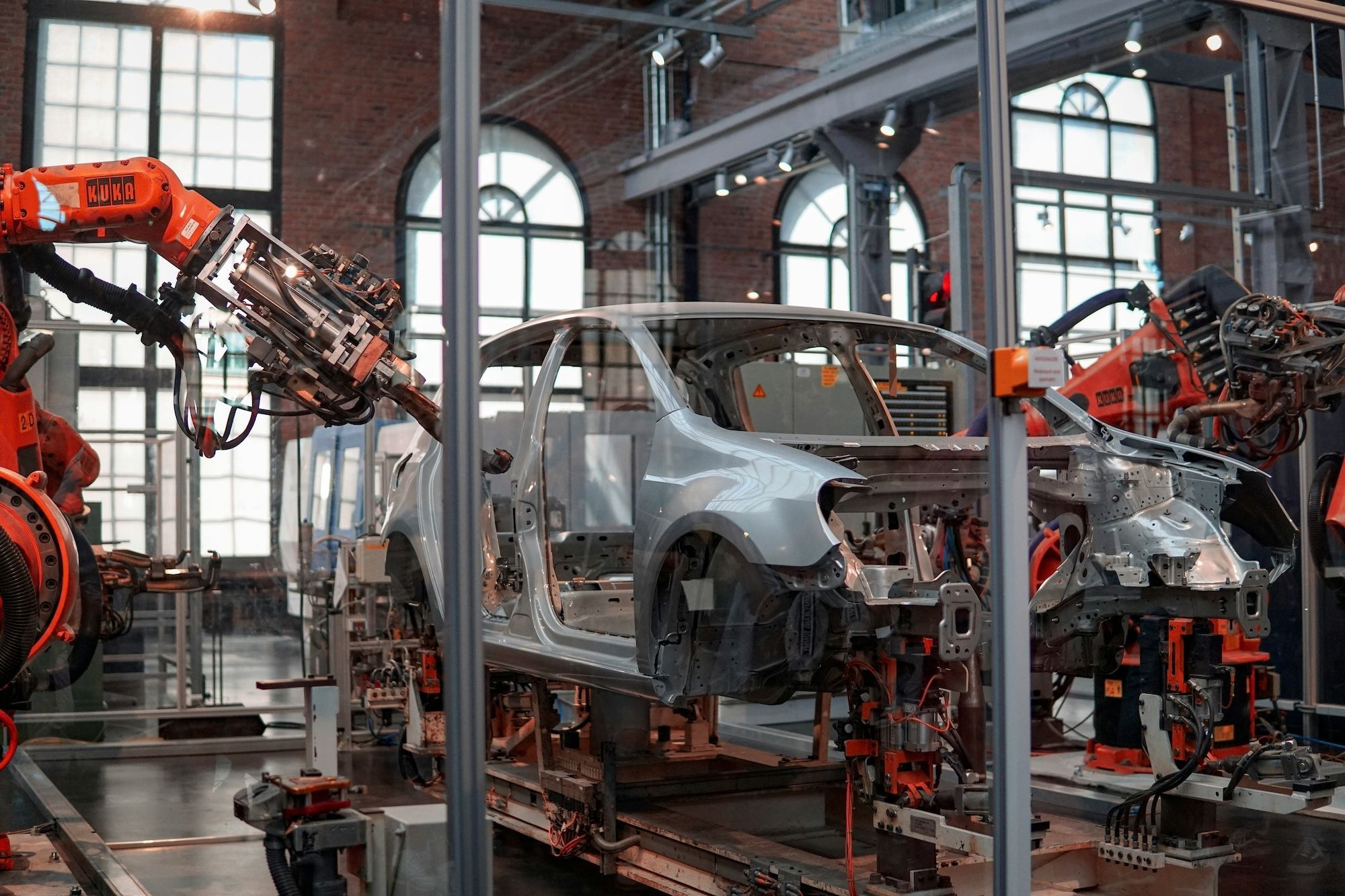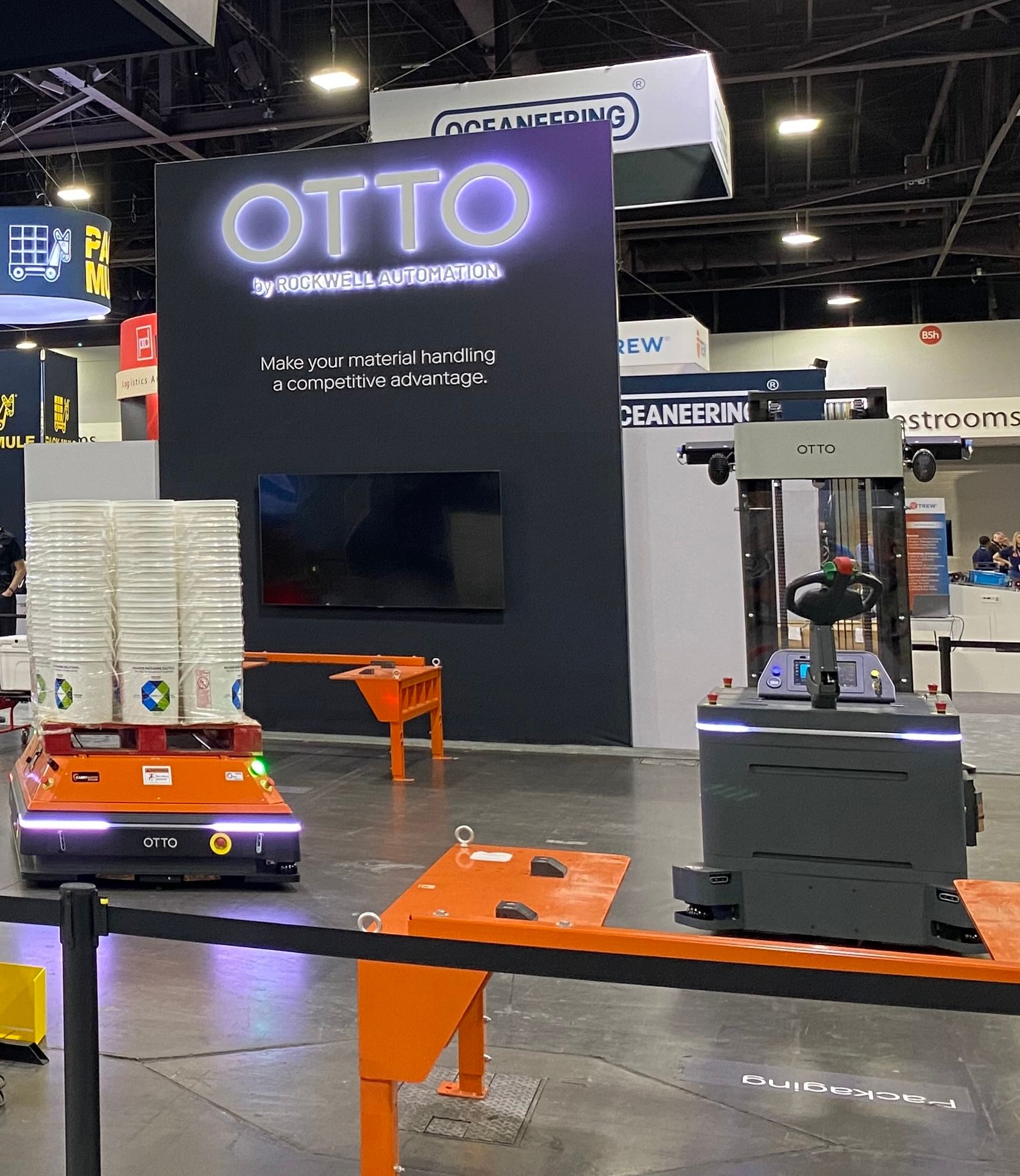Blog
Top 3 takeaways from MHI's annual industry report

The 2019 Material Handling Institute (MHI) Annual Industry Report contains a wealth of data on how companies are adopting new supply chain technologies. Here are the top three takeaways you need to know:
1. Continuous improvement beats a “one and done” approach
When it comes to implementing new technology, slow and steady wins the race. In an article for MHI magazine, Tom Gresham writes that continuous improvement is a much better approach to implementing new technologies than “larger, lurching strides.”
If you wait until you need to upgrade your technology, you’ll have a huge, expensive, time-consuming project on your hands and a ton of parts that need updating all at once (or else it won’t be possible to integrate all your old parts with the new ones). You’ll also be taking a major risk, because if something goes wrong, your business is out of operation until you fix it.
By contrast, focusing on continuous improvement and embracing digitalization lets you try new technologies, and if they don’t work right away, you can still keep your production line running. So even though implementing new technology can be a risk, doing nothing is actually the biggest risk of all.
Action steps for your business:
- Set up an internal think tank or strategic team to analyze future business scenarios and consider how best to adapt your supply chain.
- With digitization, “focus on an overall program for digital transformation, not just individual investments and initiatives.” This will likely require you to increase your investments in supply chain innovation.
- With automation, start with a small, simple project—success here will provide the momentum you need to push for bigger changes.
Read more about the importance of Industry 4.0 in this eBook.
2. A culture of innovation attracts skilled workers
Whenever you invest in new technology, you should also invest in your company culture because that is ultimately what attracts skilled employees.
It may be more exciting—and perhaps more straightforward—to invest in new technology alone. However, deciding on how much to pay when you’re looking to upgrade your culture is difficult, but that doesn’t mean you can afford to ignore it.
For ideas on how to start integrating a culture of innovation, MHI suggests assessing your supply chain digital consciousness index, or DCI (a term coined by the report authors). Find your score by taking this quiz.
Action steps for your business:
- Implement workplace policies that will attract highly skilled workers. Some ideas include allowing flexible work schedules, providing opportunities for continuous learning, and encouraging cross-functional training among employees from different departments.
- Set up a “reverse mentoring” program by partnering “younger, digital native talent with seasoned leadership.” Benefits include seasoned employees gaining insight into what’s possible with new technologies, while younger employees learn real-world business and leadership skills.
3. Act now—disrupt the market
As new technology spreads, the cost of inaction rises—so as MHI puts it, businesses that adopt new technologies “position themselves to be the disrupters, rather than the disrupted.”
The top five most disruptive supply chain technologies, according to the report, are:
- Robotics and automation
- Artificial intelligence technologies
- Autonomous vehicles and drones
- Predictive analytics
- Blockchain and Distributed Ledger Technologies

How quickly are these new technologies being adopted?
According to the report:
- The most widely adopted technology is cloud computing. Cloud computing and storage has the highest current adoption rate at 56%, and is expected to grow to 79% over the next two years, and to 91% over the next five years.
- Inventory and network optimization is forecast to reach a 75% adoption rate in two years, and 90% in the next five.
- Over the next five years, predictive analytics is expected to reach an adoption rate of 87%, followed by sensors at 86%, IoT at 80%, and wearables at 73%.
- Blockchain and artificial intelligence, however, are currently only at 10% and 13%, respectively, but are both expected to reach 62% in five years.
These findings are based on a survey of over 1,000 supply chain professionals that MHI conducted in late 2018.

Don't fall behind
In Follow The Money: A Look at Supply Chain Technology Investing Today, David Anderson, Managing General Partner at Supply Chain Ventures, maintains that although you might not have technologies like robots on your factory floor just yet, investors are betting heavily that you’ll need them within 5 to 10 years.
Just consider the furious pace of ecommerce growth: it made up 10.2% of all retail sales worldwide in 2017, and is expected to reach 17.5% in 2021. But as Anderson points out, many retailers’ distribution systems are already overloaded by peak-period orders. With the rise of “instant response, and so-called ‘free shipping,’” “manufacturers and retailers are forced to use more expensive delivery solutions to meet ever increasing customer service needs.”
That’s what’s happening now. As for the future, he asks, “[What happens] when thousands of freelance couriers join the picture and start competing with UPS and FedEx for last-mile delivery?”
And what about when the Internet of Things takes over—when customer-connected apps “spew out huge amounts of data, and expect you and your company to sort through everything and figure out how to fulfill demand”?
Businesses will need to be able to handle a vast array of special orders, and quickly hire and train workers to fulfill peak-period orders, so those that implement cloud computing, inventory and network optimization, predictive analytics, AI, and robotics will clearly have the leading edge.
When we talk about why it’s important to embrace change and technology, it’s in acknowledgement that everyone is pursuing continuous improvement and that status quo is simply not good enough. This reason alone should be reason enough to implement Industry 4.0 solutions – the resulting benefits will move operations into an entirely new playing field.
Matt Rendall
CEO, OTTO Motors
Summary of MHI's action steps for your business
- Establish a company-wide commitment to upgrading your supply chain while there’s still time to stay ahead of the curve.
- Look around your organization and ask: Where are the bottlenecks? Where is data coming in, but not being used? These areas could be ripe for digitization.
- If you don��’t have the skills to upgrade your supply chain in-house, hire someone who does.







